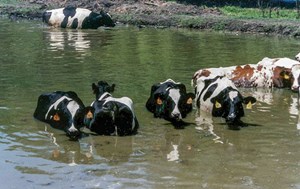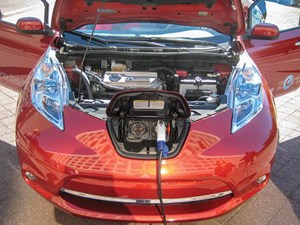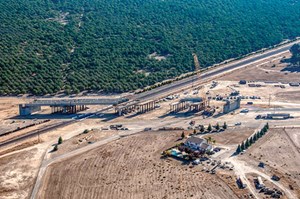Planes, trains and (electric) automobiles: The threat that is the “Green New Deal”
No one should doubt the serious threat presented to the oil and gas industry by the “Green New Deal” (GND), introduced by sponsors, Congressman Alexandria Ocasio-Cortez (D-N.Y.) and Senator Edward Markey (D-Mass.) in late January.

True, the outline of the plan briefly posted on Cortez’s congressional website read like the work of an academically-struggling 6th grader; true, the plan’s co-sponsors completely botched the rollout, with Cortez removing the document from her site within 24 hr of its initial posting; and true, the entire thing has since become the butt of countless jokes, taunts and social media memes. But no one should, for a moment, doubt that the Democratic Party is serious about the policy “solutions” contained in the plan.
Pleasing the extremists. This is because the plan that was presented was basically an accurate representation of the fondest wishes of the global Climate Change lobby. That lobby wields an extraordinary amount of influence in shaping the climate-related policies promoted by the Democratic Party, and over a growing number of Republicans, as well. Anyone in the energy business, who doubts that politicians beholden to this powerful lobby will be doing everything they can to push and implement even the most fantasy-based policy proposals contained in the GND, may as well be whistling past the proverbial graveyard.
Indeed, efforts have been ongoing for years to fund and implement some of the plan’s goals. In addition, supportive media outlets, like Vox.com, CNN and the New York Times Climate section, have been working hard to rehabilitate the plan in the public’s consciousness since its botched rollout.
Let’s take a look at how a few of the most absurd proposals in the plan are already being pushed by governments at the federal and state levels.
- Elimination of “cow farts (Fig. 1).” This part of the outline provoked peals of laughter all across the country, but the truth is that the U.S. Environmental Protection Agency (EPA) has spent millions of R&D dollars during the course of the 21st century in a Quixotic quest to do exactly that. On Dec. 5, 2008, CBS News ran a report headlined, “EPA’s Air Pollution Target: Flatulent Cows.” The story reports on farmers’ concerns about a newly-issued EPA report that seemed to propose a literal tax on cow farts. No kidding.
A Daily Caller report on April 11, 2014, details GOP concerns that the Obama EPA, led by Gina McCarthy, was also considering implementing a new tax on cow flatulence. The concern was then based on the Obama-era “Climate Action Plan,” which would enact penalties on the agricultural industry unless it found ways to reduce methane emissions—which in fact far outstrip similar emissions from the natural gas industry—by 25%, by the year 2020.
A simple web search turns up literally hundreds of similar stories over the years, all based on reports and studies issued by the EPA. Anyone who thinks federal regulators aren’t seriously intent on regulating cow farts hasn’t been paying attention.
- “Meet 100% of power demand through clean and renewable energy sources.” If you doubt the federal and state governments are 100% serious about this 100% goal, what do you think all of those tax subsidies for wind and solar are all about? What do you think the Obama administration’s war on the coal industry was all about? No one in the oil and gas industry should ever think that it is the intent of the Climate Change lobby to halt their efforts to destroy fossil fuels, once they’re done with the coal industry. Indeed, the Obama EPA was already well on its way to directing similar “solutions” toward the oil and gas industry before the 2016 presidential election intervened.
- “Totally overhaul transportation by massively expanding electric vehicle manufacturing, build charging stations everywhere (Fig. 2). Build out high-speed rail at a scale where air travel stops becoming necessary, create affordable public transit available to all, with the goal to replace every combustion-engine vehicle.” Again, what do you think all of those federal and state subsidies, for wealthy people to purchase electric vehicles (EVs), are all about?
And those subsidies are just the tip of the policy iceberg, where the artificial promotion of EVs is concerned. You also have the flip side of the coin, where state governments, like those of California and New York, implement policy after policy, and tax after tax, designed to artificially inflate the price of gasoline and gasoline-powered cars.

As for the proposal to eliminate air travel by building out presumably tens of thousands of miles of “high-speed rail,” here’s the reality of how that would happen: The federal government would expand on the already-existing policies of foregoing trillions of tax dollars subsidizing electric vehicles, while at the same time bankrupting millions of Americans by raising taxes on gasoline and diesel to levels that make it too expensive to drive internal combustion engine cars and long-haul trucks. This will, in turn, create massive job losses and food shortages throughout the nation, as it becomes too expensive to transport things like groceries and other consumer goods via large trucks or traditional rail. But no one in the Climate Change lobby appears concerned about that inevitable outcome.
Next, the government will have to condemn and seize millions upon millions of acres of privately-owned lands to accommodate all the thousands of miles of rights-of-way for all the new rail lines that the GND advocates want to build. This will bankrupt thousands of family farmers and millions of other Americans, whose abilities to earn a living depend upon the use of their private property; but hey, at least they’ll have charging stations available to charge their non-existent electric vehicles that are now even more unaffordable than they were before any of this began.
All the new rail construction will have to be completed using diesel-fired vehicles, since the EV technology to run such massive equipment is non-existent, and we’ll have to build a fleet of new nuclear-, natural gas- and coal-fired power plants to provide electricity to all of those unused charging stations that will now exist “everywhere.”
Travel aspects. Once it becomes too expensive to travel by air—which will, of necessity, happen long before a single mile of new “high-speed” rail line is built—then places like California, Florida, New York City and Las Vegas—not to mention Hawaii and Alaska—can forget about their tourism. Even after the high-speed rails are built, which will become an increasingly impossible goal over time, who is going to want to travel from, say, Alabama to Las Vegas on a train that, while it may achieve a high-end speed of 250 mph or so (roughly 1/2 the speed of a passenger jet), will no doubt be required by the federal government to stop dozens of times on the way in every city, town, hamlet and roadside park, in order to meet the stated goal of being “available to all?”

We’ve already seen the example of California having to cancel most of Jerry Brown’s great high-speed rail boondoggle (Fig. 3), as the original $29-billion cost estimate climbed well north of $100 billion, with no end in sight. Yet, despite that clear object lesson, Ocasio-Cortez, Markey and their supporters would have us believe that we can just slap down hundreds of thousands of miles of high-speed rail all over our country, replacing the miracle of air travel with the favorite 19th century mode of transportation, and do it all in a span of a mere decade.
But here’s reality: The total miles of existing high-speed rail adds up to 27,000 mi—globally. Worldwide. That number might seem impressive, until one understands that the first such rail line was completed and put into operation in 1964, just after Lyndon Johnson became President. That’s right: In 55 years, the entire world has laid just 27,000 mi of high-speed rail, an average of about 500 mi per year.
But it gets even less impressive, when one learns that 19,000 of those miles were built in China by one of the most oppressive totalitarian regimes in world history, not exactly the model that the U.S. has ever wanted to emulate.
Yes, much of it is impossible. Yes, many of the proposals would require the federal government to transform into an even more abusive and oppressive form of government than it already has become.
But un-serious? No, no one should ever think the promoters of the GND are not serious about pushing their ideas, until we are all living under them. Because they are deadly serious, indeed.
- Applying ultra-deep LWD resistivity technology successfully in a SAGD operation (May 2019)
- Adoption of wireless intelligent completions advances (May 2019)
- Majors double down as takeaway crunch eases (April 2019)
- What’s new in well logging and formation evaluation (April 2019)
- Qualification of a 20,000-psi subsea BOP: A collaborative approach (February 2019)
- ConocoPhillips’ Greg Leveille sees rapid trajectory of technical advancement continuing (February 2019)


